Xiangyu Pi
Fundamental Models and Signal Processing for Movable Antenna-Enhanced Wireless Communications and Sensing
Nov 07, 2025
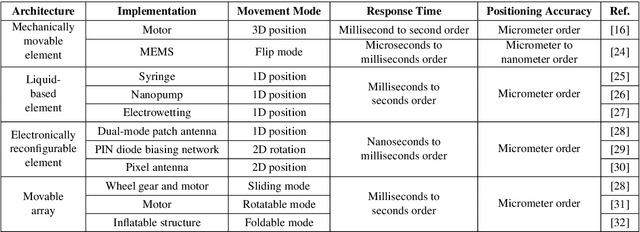
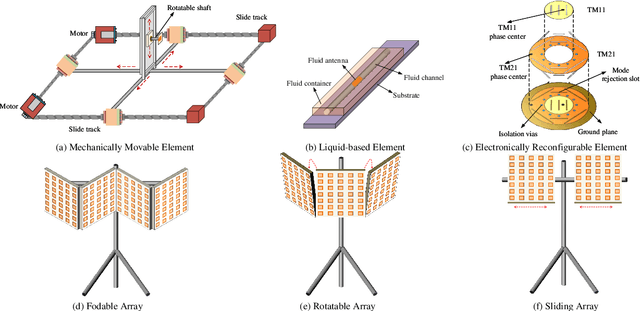
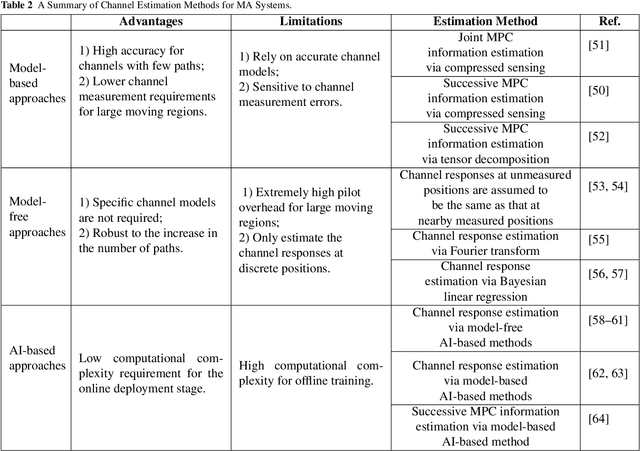
Abstract:Movable antenna (MA) has been recognized as a promising technology for performance enhancement in wireless communication and sensing systems by exploiting the spatial degrees of freedom (DoFs) in flexible antenna movement. However, the integration of MAs into next-generation wireless networks still faces design challenges due to the paradigm shift from conventional fixed-position antennas (FPAs) to MAs, which motivates this paper to provide a comprehensive overview of the models, scenarios, and signal processing techniques for MA-enhanced wireless networks. First, we introduce several efficient methods to realize flexible antenna movement. Next, channel models based on field response and spatial correlation are presented to characterize the channel variations with respect to MA movement. Then, we discuss the advantages and challenges of applying MAs to typical application scenarios of wireless communications and sensing. Moreover, we show the signal processing techniques for MA-enhanced communication and sensing systems, including channel acquisition and antenna position optimization. Finally, we highlight promising research directions to inspire future investigations.
6D Movable Antenna Enhanced Multi-Access Point Coordination via Position and Orientation Optimization
Dec 14, 2024



Abstract:The effective utilization of unlicensed spectrum is regarded as an important direction to enable the massive access and broad coverage for next-generation wireless local area network (WLAN). Due to the crowded spectrum occupancy and dense user terminals (UTs), the conventional fixed antenna (FA)-based access points (APs) face huge challenges in realizing massive access and interference cancellation. To address this issue, in this paper we develop a six-dimensional movable antenna (6DMA) enhanced multi-AP coordination system for coverage enhancement and interference mitigation. First, we model the wireless channels between the APs and UTs to characterize their variation with respect to 6DMA movement, in terms of both the three-dimensional (3D) position and 3D orientation of each distributed AP's antenna. Then, an optimization problem is formulated to maximize the weighted sum rate of multiple UTs for their uplink transmissions by jointly optimizing the antenna position vector (APV), the antenna orientation matrix (AOM), and the receive combining matrix over all coordinated APs, subject to the constraints on local antenna movement regions. To solve this challenging non-convex optimization problem, we first transform it into a more tractable Lagrangian dual problem. Then, an alternating optimization (AO)-based algorithm is developed by iteratively optimizing the APV and AOM, which are designed by applying the successive convex approximation (SCA) technique and Riemannian manifold optimization-based algorithm, respectively. Simulation results show that the proposed 6DMA-enhanced multi-AP coordination system can significantly enhance network capacity, and both of the online and offline 6DMA schemes can attain considerable performance improvement compared to the conventional FA-based schemes.
Dynamic Beam Coverage for Satellite Communications Aided by Movable-Antenna Array
Apr 24, 2024



Abstract:Due to the ultra-dense constellation, efficient beam coverage and interference mitigation are crucial to low-earth orbit (LEO) satellite communication systems, while the conventional directional antennas and fixed-position antenna (FPA) arrays both have limited degrees of freedom (DoFs) in beamforming to adapt to the time-varying coverage requirement of terrestrial users. To address this challenge, we propose in this paper utilizing movable antenna (MA) arrays to enhance the satellite beam coverage and interference mitigation. Specifically, given the satellite orbit and the coverage requirement within a specific time interval, the antenna position vector (APV) and antenna weight vector (AWV) of the satellite-mounted MA array are jointly optimized over time to minimize the average signal leakage power to the interference area of the satellite, subject to the constraints of the minimum beamforming gain over the coverage area, the continuous movement of MAs, and the constant modulus of AWV. The corresponding continuous-time decision process for the APV and AWV is first transformed into a more tractable discrete-time optimization problem. Then, an alternating optimization (AO)-based algorithm is developed by iteratively optimizing the APV and AWV, where the successive convex approximation (SCA) technique is utilized to obtain locally optimal solutions during the iterations. Moreover, to further reduce the antenna movement overhead, a low-complexity MA scheme is proposed by using an optimized common APV over all time slots. Simulation results validate that the proposed MA array-aided beam coverage schemes can significantly decrease the interference leakage of the satellite compared to conventional FPA-based schemes, while the low-complexity MA scheme can achieve a performance comparable to the continuous-movement scheme.
Multiuser Communications with Movable-Antenna Base Station: Joint Antenna Positioning, Receive Combining, and Power Control
Aug 18, 2023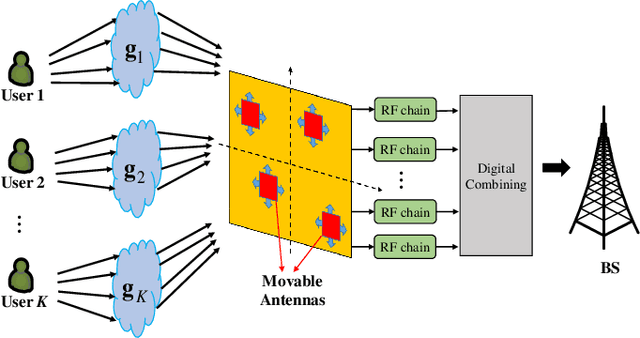
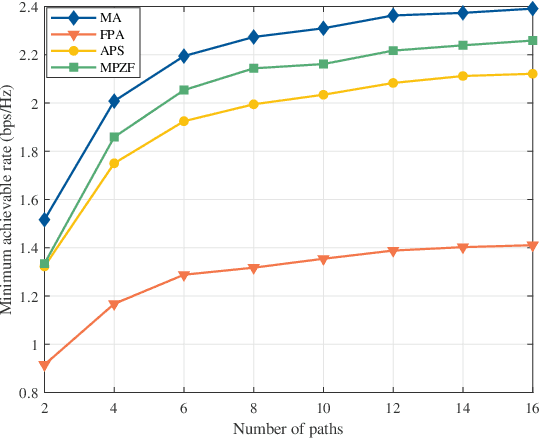
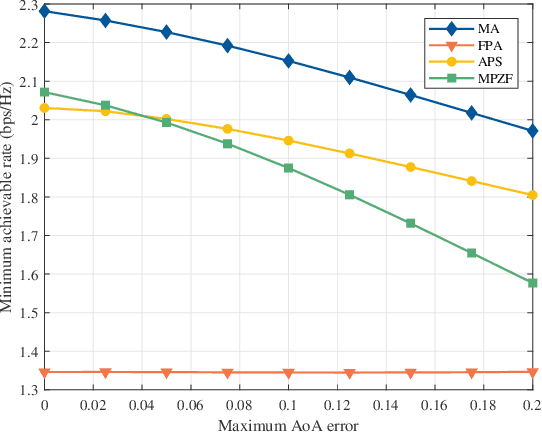
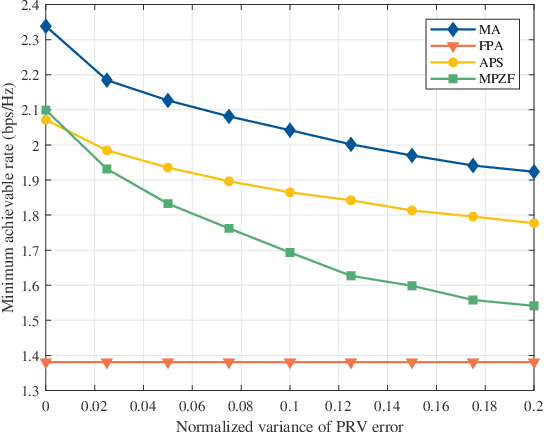
Abstract:Movable antenna (MA) is an emerging technology which enables a local movement of the antenna in the transmitter/receiver region for improving the channel condition and communication performance. In this paper, we study the deployment of multiple MAs at the base station (BS) for enhancing the multiuser communication performance. First, we model the multiuser channel in the uplink to characterize the wireless channel variation due to MAs' movements at the BS. Then, an optimization problem is formulated to maximize the minimum achievable rate among multiple users for MA-aided uplink multiuser communications by jointly optimizing the MAs' positions, their receive combining at the BS, and the transmit power of users, under the constraints of finite moving region for MAs, minimum inter-MA distance, and maximum transmit power of each user. To solve this challenging non-convex optimization problem, a two-loop iterative algorithm is proposed by leveraging the particle swarm optimization (PSO) method. Specifically, the outer-loop updates the positions of a set of particles, where each particle's position represents one realization of the antenna position vector (APV) of all MAs. The inner-loop implements the fitness evaluation for each particle in terms of the max-min achievable rate of multiple users with its corresponding APV, where the receive combining matrix of the BS and the transmit power of each user are optimized by applying the block coordinate descent (BCD) technique. Simulation results show that the antenna position optimization for MAs-aided BSs can significantly improve the rate performance as compared to conventional BSs with fixed-position antennas (FPAs).
Multiuser Communications with Movable-Antenna Base Station Via Antenna Position Optimization
Aug 10, 2023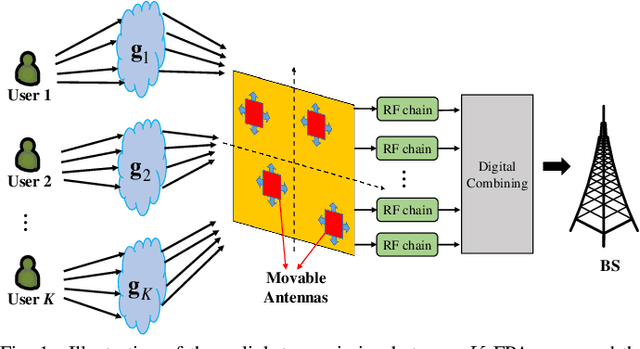
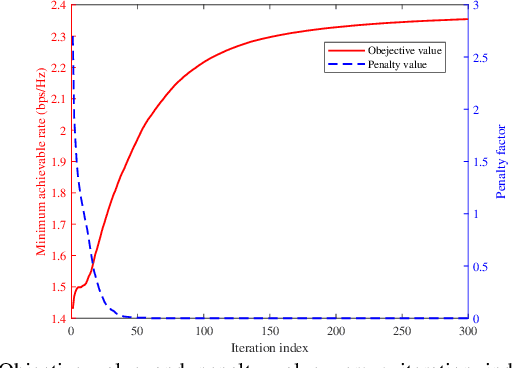
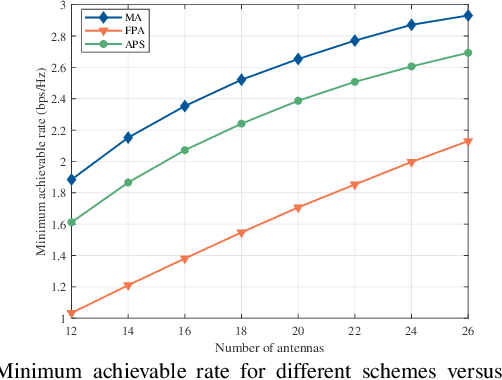
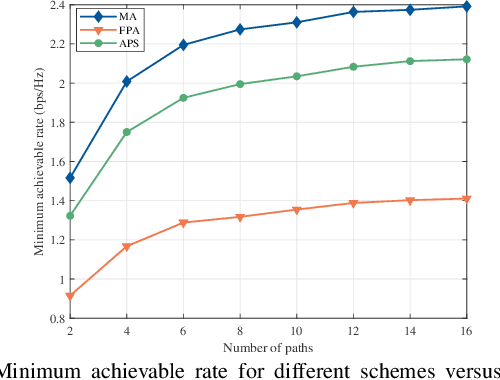
Abstract:This paper studies the deployment of multiple movable antennas (MAs) at the base station (BS) for enhancing the multiuser communication performance. First, we model the multiuser channel in the uplink to characterize the wireless channel variation caused by MAs' movement at the BS. Then, an optimization problem is formulated to maximize the minimum achievable rate among multiple users for MA-aided uplink multiuser communications by jointly optimizing the MAs' positions, their receive combining at the BS, and the transmit power of users, under the constraints of finite moving region of MAs, minimum inter-MA distance, and maximum transmit power of each user. To solve this challenging non-convex optimization problem, a two-loop iterative algorithm is proposed by leveraging the particle swarm optimization (PSO) method. Specifically, the outer-loop updates the positions of a set of particles, where each particle's position represents one realization of the antenna positioning vector (APV) of all MAs. The inner-loop implements the fitness evaluation for each particle in terms of the max-min achievable rate of multiple users with its corresponding APV, where the receive combining matrix of the BS and the transmit power of each user are optimized by applying the block coordinate descent (BCD) technique. Simulation results show that the antenna position optimization for MAs-aided BS can significantly improve the rate performance as compared to conventional BS with fixed-position antennas (FPAs).
 Add to Chrome
Add to Chrome Add to Firefox
Add to Firefox Add to Edge
Add to Edge